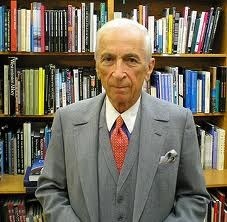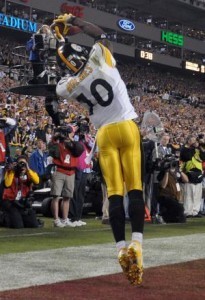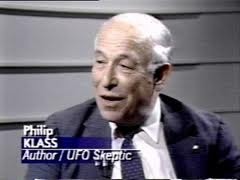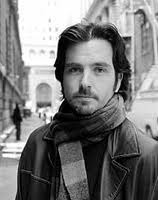Steve Volk's Blog, page 31
September 22, 2011
Best Bylines in the Business

Books Become Him
Over the last several weeks I've become enamored of a website called byliner. There, the editors collect the most sophisticated feature journalism around, written in the style of the best fiction.
Byliner is a great site to just browse and look for a story that appeals to you. But I particularly enjoy seeing where the site takes me. For instance, check out the writer Gay Talese's collection of work there. For those who don't know, Talese is not only arguably one of the finest journalists in this country's history, he is simply one of its greatest writers.
Check out this passage from "Travels With A Diva," an article he penned not long ago for the New Yorker, about the great soprano Marina Popslavskaya, who passed out on a hot night in August:
"Even after she was revived by two emergency medical technicians, who had come to the apartment at around 8 AM. in response to a call from her mother, Poplavskaya, who is thirty- three, lacked the strength to get to her feet. Her mother placed cool wet towels on her forehead and supported the back of her neck with a chilled bottle of Friuli wine that Poplavskaya had bought at the duty-free shop in the Frankfiurt airport the week before…"
Truth: If I'd been writing this piece, I would likely have been so enthralled by this material that I would have been satisfied to pen: "…supported the back of her neck with a bottle of wine."
Talese, the meticulous, got the region it came from (Friuli), as well as when (the week before) and where (the duty free shop in the Frankfurt airport).
So there's a lot of great writing pulled together by the curators at byliner. But even better, there is often only a fragment of any given piece on the site. Readers can usually see the whole thing by clicking on "read at source." But that button leads to some great surprises, as happened tonight when I clicked through to take in all of Talese's epic, "Charlie Manson's Home On the Range," and found myself staring at scanned pages of the 1970 Esquire it came from. The Beefeater ad alone is worth visiting the page for. But reading the story seemingly from the (digitally) torn out pages of the old magazine is even better—illicit, a stolen pleasure.
Go check it out for yourself and get ready for more beautiful writing, like the lovely way this paragraph shifts gears for idyllic to menacing in the space of a few words:
"He does not remember exactly when they first moved on to the ranch. He believes one group of hippie girls and boys arrived in 1967, possibly having come down from San Francisco, and settled briefly in a roadside church several miles north of his ranch; and eventually, in their wanderings down the hill searching for food, they discovered the many empty shacks along the riding path in the woods. They lived in the shacks briefly and Spahn did not object; but one morning there was a police raid…"
See the rest here.
September 21, 2011
There Goes The Sun?
 I have been watching with something approaching horror as the Not-So-Great Solyndra Scandal of 2011 starts to occupy more and more of the political conversation. The story first really broke in a Washington Post article. But the short version is that internal emails suggest White House officials tried to rush federal reviewers for a decision on a nearly half-billion-dollar loan to the solar-panel manufacturer Solyndra. Why the press? Because Vice President Biden wanted to announce the approval at a September 2009 groundbreaking for the company's factory.
I have been watching with something approaching horror as the Not-So-Great Solyndra Scandal of 2011 starts to occupy more and more of the political conversation. The story first really broke in a Washington Post article. But the short version is that internal emails suggest White House officials tried to rush federal reviewers for a decision on a nearly half-billion-dollar loan to the solar-panel manufacturer Solyndra. Why the press? Because Vice President Biden wanted to announce the approval at a September 2009 groundbreaking for the company's factory.
There is precious little to suggest the White House was trying to derail the process entirely, and force a yes out of officials responsible for vetting the loan. But as might be expected, the opportunity to score political points here is too great to let pass up.
Something smells bad about every end of this brewing "scandal" to me. And so I point you all toward this little essay from Micah Gold-Markel, the owner of a solar power distribution company called Solar States. Gold-Markel argues that the problem isn't that Solyndra received a whopping $500 million loan. The problem is… the loan wasn't bigger.
It seems the White House was, internally, conflicted over whether or not to keep doling out money to Solyndra before the company finally shut its doors in August. And Gold-Markel paints a portrait that indicts the government as a whole for not doing more to advance the entire solar industry.
"While covering this story from the 'tax payers stand to lose lots of money' angle," writes Gold-Markel, "the majority of media outlets missed the point. This was actually a calculated risk, that could still work! Jonathan Silver, Executive Director of the Energy Department's Loan Programs Office, said the loan guarantee program is needed to give U.S. companies the kind of low-cost financing that other nations are providing their renewable energy industries."
Read the rest—here.
September 20, 2011
Sports and the Paranormal

You tell me: Is he in?
A lot of Fringe-ology revolves around problems associated with human perception. We do see what we want to see. And there is perhaps no finer ongoing example than the way this phenomenon plays out, seemingly every day, in sports.
Anyone who watches soccer, football or any major sports where wages are bet and the fans are emotionally invested knows the home crowd will boo any call that goes against them , even it was obviously right. For a long time, I figured this was almost some sort of ploy. Give the officials the business, all game long, in the hopes of wearing them down and winning some subjective calls for your team. But as I researched Fringe-ology and looked into some of these questions a bit more closely, it became grossly apparent: Fans really do believe obviously good calls went against their team unfairly. And here's a great case in point.
Check out these videos, and the message board comments beneath them. The topic is Super Bowl XLIII when the Pittsburgh Steelers won the game, with less than a minute left, after an incredible toe-tapping catch in the corner of the end zone.
Check it all out after the jump.
The Catch
It's pretty clear Holmes was in. But not in Arizona, where the Arizona Republic went all in for the Cardinals, gunning for controversy with headlines like "Was Holmes' Catch Too Unreal?" The cause never really took off, though, precisely because Holmes was in. But five days after the game the paper printed a series of freeze frames of Holmes' reception that really bury the lead (a cardinal sin, no pun intended, in newspaper reporting). Check frames 10 and 12 and it's obvious, again, this is a legal NFL catch. But the Republic clearly thought they were on to something, and judging from the comments section, so did Cardinals' fans.
What are they looking at?
Well, clearly not what they were seeing in Pittsburgh. Because pro-Steelers websites were writing their own stories, looking at the same catch, and calling it obviously all good.
One guy even put together a Zapruder-like defense of Holmes' catch, which I include here.
Steelers Fan With Time On His Hands
It should be noted this was apparently a response to:
A Cardinals Fan With Time On His Hands
The upshot of all this is that we need to understand: Sometimes we can't believe our own lying eyes. When our expectations or desires conflict with reality, well, sometimes reality can be very difficult to perceive.
September 19, 2011
This Charming Man
 I was very pleased today to see Kevin Randle had published a thoughtful, meticulous takedown—my description, not his—of the late Phil Klass.
I was very pleased today to see Kevin Randle had published a thoughtful, meticulous takedown—my description, not his—of the late Phil Klass.
In the schism between skeptics and believers Klass long served as one of the chief debunkers of UFO claims, and as a long-time editor at Aviation Week, a very practical and scientifically oriented trade publication, he had a sturdy pulpit to preach from.
Problem is, Klass was himself something of a true believer, and as I write in Fringe-ology he seemed unable—or unwilling—to admit that any particular UFO sighting was simply unexplained. From my point of view, to allow that a specific sighting has yet to be explained is not equal to saying ET has visited the earth. But professional skeptics tend to act as if admitting uncertainty on any paranormal claim is tantamount to declaring defeat.
The High Strung Skeptic Class, of which Klass was most certainly a card carrying member, is also, like the majority of us, often guilty of behaving badly. And it is into this particular stream that Randle steps. I've been offering some comments on the article and I highly recommend you bop on over to Randle's site to check the whole piece out for yourself. A quick excerpt to whet your appetite, with a link at the end of the post, follows after the jump.
"Klass routinely caused trouble for the witnesses, researchers, investigators and believers in UFOs by writing letters to their families, friends and employers and that he harassed them periodically when they didn't respond to him as he thought they should.
"Here's what we can prove.
"Klass, using his power as an editor of Aviation Week (meaning he wrote his letters in the McDonald case on the magazine's letterhead, suggesting the inquiry was not from Philip Klass private citizen, but from Philip Klass on the staff of the magazine) contacted the Office of Naval Research about Dr. James McDonald. He wanted to know if McDonald had been doing UFO research while on grant research in Australia.
"The answer was yes, but the ONR knew about it and had tacitly approved what McDonald had been doing. Klass was not satisfied, though I don't know why, or who he thought he was to object. He had raised what we all might agree was a legitimate concern about the misuse of government money for UFO research. ONR launched an internal audit and determined that what McDonald had done was not outside the rather wide scope of his research grant.
"Klass, continued writing letters… enough to cause concern in the ONR. While the thinking at ONR is not known, it is known that the military, as well as others in Washington, D.C., respond quickly to inquiries from Aviation Week. Klass might claim that he was a private citizen concerned with taxpayer money, but he used the club of the magazine to get what he wanted. ONR decided not to continue funding McDonald's research. We can guess why they made that decision, but it would only be a guess.
"It is not clear if Klass' superiors knew what he was doing or if they would have approved had they known in the beginning. By the time the question was raised about the legitimacy of Klass' use of Aviation Week letterhead, the wagons were circled and other editors suggested they knew and approved of Klass' action. Kind of the same circumstance that we find with McDonald and his superiors at ONR.
"The point here is that Klass did contact McDonald's superiors and slung allegations about the legitimacy of McDonald's research."
*
As Randle's post unwinds, he reveals that Klass did this sort of thing on a fairly regular basis—looking for some sort of flaw not just in the data, or the stories, presented by UFO believers, but in the people themselves.
I highly recommend you click here for the rest.
September 16, 2011
The Race Is On!

Bunny and Fishy, of the Flaming Lips.
Few acts convey quite so much joy onstage as the Flaming Lips, though lead singer Wayne Coyne is, quite simply, completely unable to sing. But never a man to let reality deny him his dreams, sing Coyne does, finding something close to the note he's looking for in his quavering tenor just as he finds joy amidst the sadness.
"Race for the Prize" covers dubious territory for a pop song—the battle to discover a cure for cancer—but those are just words. The real meaning of this tune lies in those soaring keyboard figures, the bashing, propulsive drums and Coyne's tattered but ever keening voice. Judging by the crowd's reaction, the Lips' found a cure—a momentary, but valuable one, for any sense of nihilism the dread "c" word evokes.
September 15, 2011
Mysterious Float Tanks

Lilly—after the entitities.
Maybe the single wildest tale I heard during my extended break from blogging was this bit from Mysterious Universe, a terrific website and podcast that interviewed me for Fringe-ology.
In this podcast, they addressed, among other things, the story of John C. Lilly a neuroscientist whose work with isolation tanks and hallucinogens convinced him we could very well be manifestations of some other, non-physical entity. For those who don't know, a "float tank" is also known as a "sensory deprivation" tank. Users float inside a specially constructed chamber, which holds a bath of Epsom salts and completely blocks out all sound and light.
Upon his death of heart failure in 2001, Lilly was often portrayed as an eccentric old scientist.
I especially enjoy this old chestnut from the San Francisco Weekly:
"'In the province of the mind, there are no limits,'" Lilly uttered in one taped 1993 interview. "'However, in the province of the body, there are many things that one should not transcend.'" And then, as if he didn't want to be bothered with further explanations, he leaned back in his chair and said, "'Sayonara.'"
Good stuff, right?
The question, however, is whether Lilly was merely an eccentric or if he actually had something to teach us. Float tanks remain largely marginalized here in the U.S. but an annual "float summit" promotes their use for a variety of stress-related ailments.
I highly recommend the Mysterious Universe podcast. The hosts are wildly entertaining. And they get into a typically funny and insightful discussion of the most controversial claim Lilly ever made: That we are vehicles through which some non-physical or purely conscious entity learns. Here is an excerpt with a link to the full Mysterious monty at bottom:
*
One day in 1958 John entered the tank room, put on the mask, and immersed himself in the water for the last time at the National Institutes of Health. He had finally realized that within the government it was impossible to do the research that he wished to do. Inevitably, subtly, those in charge of research for the National Institute of Mental Health were asking to control the isolation-tank work. And those in charge of brain research in the National Institute of Neurological Diseases and Blindness were beginning to exert controls on the work on the brain. In this session in the tank, he planned to review what he had learned over the last five years in regard to research on the brain and the mind and the support of this research.
John went through his now more-or-less standard procedure of relaxing every muscle in his body while floating in the water. He then relaxed his mind and let go of the residues of the day's activities. Quite suddenly he was in a new space, a new domain.
He left his human body behind. He left his human mind behind. He became a point of consciousness, of awareness, in an empty, infinite space filled with light.
Slowly two presences, two Beings, began to approach him from a distance. There was a three-way exchange of direct thought, of direct meaning, of direct feeling with no words.
*
Enjoy the rest at Mysterious Universe
.
September 14, 2011
Philly's Best Young Reporter?

The Inquirer's Mike Newall
Late last week, I filed this small online item about a new round of buyouts underway at the Philadelphia Inquirer and Daily News. For those who don't know, a buyout is what they call it when management pays someone to quit their job.
A lot of people take a snarky attitude when they write these kinds of stories. I've been accused of it myself from time to time. But the truth is I know many of the people who are working in this difficult environment, where buyouts are only a prelude to layoffs. The point of this post is to make people aware of the cost—not to the employees who continue to labor amid such uncertainty, but to the reading public.
The Inquirer and Daily News have both hired some young reporters in recent years, partly in an attempt to save on salaries and also to restore some bodies to man the ramparts of an enterprise that has lost too much staff in recent years. A lot of those young reporters are doing a stellar job. But the deal management currently holds with the Philadelphia Newspaper Guild means that those young, newly hired reporters are slated to be the first to go if the buyouts don't garner enough interest and layoffs follow.
One of those reporters is a good friend of mine, Mike Newall, who has been a real star in the Inquirer's pages ever since he showed up. He wrote this gut-punch of a piece about a woman who took a bullet near her heart, the day before Mother's Day, while trying to defend her son from a gunman. And he wrote this remarkably well-observed description of the sentencing hearing for three juveniles convicted in one of Philadelphia's recent, harrowing "flash mob" incidents.
I worked with Mike for many years at Philadelphia Weekly, and I'm intimately familiar with how he stays at a scene, asking questions, till he finds the kinds of telling details that make people feel like we're there. Frankly, his like is all too rare in daily journalism as a whole and it's a crying shame that he could wind up losing his gig, depriving Philadelphia of a first class street reporter. So, here's hoping Mike survives, and in the meantime here's an excerpt from one of my favorite Newall stories—a tick tock, or chronological write-up of one of those flash mob incidents I mentioned earlier, with the full story after the jump.
*
About 10 p.m., Maria said, she saw a shirtless teenager run past the restaurant.
"He was running in the middle of the street and looked like he was running away from someone," she said.
Maria tucked away her phone and wallet, which had been sitting on the table.
She grew up in Brazil, she said, and was more street-smart than her cousin.
Before she could tell Cecilia to put her cell phone away, another teen reached through the window and snatched it.
Maria ran out after him.
She was on the sidewalk, starting to scream "thief," she said, when someone from behind punched her in the jaw.
She said she turned, jaw throbbing, to see the girl who had hit her standing with five other teens. "What are you going to do?" she said the girl who had punched her yelled.
The teens were laughing, she said. "They were fearless. It seemed like they weren't taking anything serious."
See the rest here.
About 10 p.m., Maria said, she saw a shirtless teenager run past the restaurant.
"He was running in the middle of the street and looked like he was running away from someone," she said.
Maria tucked away her phone and wallet, which had been sitting on the table.
She grew up in Brazil, she said, and was more street-smart than her cousin.
Before she could tell Cecilia to put her cell phone away, another teen reached through the window and snatched it.
Maria ran out after him.
She was on the sidewalk, starting to scream "thief," she said, when someone from behind punched her in the jaw.
She said she turned, jaw throbbing, to see the girl who had hit her standing with five other teens. "What are you going to do?" she said the girl who had punched her yelled.
The teens were laughing, she said. "They were fearless. It seemed like they weren't taking anything serious."
September 13, 2011
Drugs, Drugs, Drugs
 I wrote this piece on the Top 10 Drug Corners in Philadelphia—a sequel—over the summer. The project was typical of what I think we'll be seeing in journalism's future—a long, investigative project made possible by a grant, in this case from the J-Lab at American University.
I wrote this piece on the Top 10 Drug Corners in Philadelphia—a sequel—over the summer. The project was typical of what I think we'll be seeing in journalism's future—a long, investigative project made possible by a grant, in this case from the J-Lab at American University.
It was also a collaboration among publications, picked up by Philadelphia Weekly and edited by Jonathan Valania at Phawker (Phawker = Gawker in Philadelphia. Get it?.)
Here's an excerpt, the first bit of the lede, with a link at the bottom for the rest.
*
In 2007, I wrote a cover story for this publication called "Top 10 Drug Corners," which ranked the city's most depressing and dangerous drug corners like Philadelphia magazine ranks pizza or bars or bikini wax salons. After all, when you strip away all the blood and guts and stray gunfire, drug dealing is, at heart, competitive retailing of a rare and precious commodity: Feeling good. There is, of course, a huge market for such a commodity, especially in places that are inhospitable to legitimate business and industry. Which is why the drug trade always seems to flourish in places where angels fear to tread. Philadelphia, one of the poorest major cities in America, has many such places.
In many of the city's neighborhoods, the opportunities for gainful employment are so scarce and hopelessness so abundant that a vacuum has been created—and nature, of course, abhors a vacuum. With no noise of legitimate enterprise to fill the air—no rumble of a truck toting freight, no murmur of conversation from shoppers mingling on the sidewalk—the most prevalent sounds arise from the underground economy.
"Wet, wet, wet."
"Xannies!"
"Suboxone!"
"Oxy!"
"Greenies!"
"Dope?"
"You smokin' that crack?"
"What you need?"
Eight different come-ons, from a vast collection of different Philadelphians—white, black and Latino; young, middle-aged and graying. And all these offers speak to the same basic truths: Philadelphia is awash in the narcotics trade. And like all illicit economies, the drug trade begets a brutal gangsterism whose stock in trade is violence—on an industrial scale. The statistics are as astonishing as they are appalling. "We've had 16,000 shootings here in the last 10 years," says Assistant U.S. Attorney Rob Reed. "Sixteen—THOUSAND!"
That averages out to four Philadelphians being shot every day, or one citizen every six hours. Since 2008, more Americans have been murdered in Philadelphia than killed in Iraq. In other words, we have the equivalent of an undeclared shooting war raging semi-visibly in the city's most desolate and depleted neighborhoods. And Philadelphia is hardly the exception to the rule. Rather, depressingly enough, it is the rule.
As a result, the poorest of the poor in Philadelphia are cut off from the most basic aspects of personhood that the rest of us take for granted. They live in constant fear of seemingly random violence, which, sustained year after year, has created an increasingly common mindset—which some would call cynical and others would call being realistic—that the powers that be either cannot help them, do not care to help them, or, even worse, somehow profit from their suffering.
Read the rest, here:
September 12, 2011
Serotonin, Carbon Dioxide, Oxygen Deprivation, DMT, Ketamine, Fear, Endorphins, REM Intrusion and High Altitudes All Cause NDEs!

A rat, eyeing the beyond?
Sorry. I couldn't help myself. In looking over what's happened in the world of the paranormal while I've been away, it seems another skeptical researcher is seeking to identify still another cause for the Near Death Experience. (My headline is a kind of rip-off, or homage, if you will, to the classic Onion bit: "Kennedy Slain By CIA, Mafia, Castro, LBJ, Freemasons".) With all these possible causes—Dr. Jeffrey Long says skeptics have identified 20—it's a wonder we're not all going around seeing the white light, all the time.
The latest culprit is serotonin. And this breathless New Scientist article is most responsible for promoting what looks like a very tenuous idea, at best. "Near-death Experiences May Be Triggered by Serotonin," reads the headline. This being the New Scientist we might expect some intriguing evidence has been found to support this claim. But alas, all we have is a single German study in which six rats, each given an overdose of anaesthesia, all had triple the normal average levels of serotonin by the time they died.
There are no findings related to people, let alone people not given too much anesthetic. There are also no reports that any of the rats woke up and reported seeing a brilliant white light and feeling "perfect peace," but I suppose that's to be expected.
In honor of this study, please enjoy this NDE tale from Dr. Lloyd Rudy, a pioneer in cardiac care from Spokane, Washington. He offers up a particularly compelling story of some, seemingly, accurate out of body perceptions. I am planning to try and contact Rudy in the next week or two, to see if I can interview him.
DR. LLOYD RUDY
September 11, 2011
Gone Too Long

Something had to give.
I ran into a bit of buzz saw, between continuing to promote Fringe-ology while starting back in at Philadelphia Magazine and penning another piece on drug dealing in Philadelphia.
I also had a couple of construction projects—not kidding—to deal with, including one at home and another at Philadelphia's historic Pen and Pencil club. If you're in town, be sure to stop by and see the nation's oldest press club.
Something had to give, and I'm sorry to say: It was this blog. Sorry to have been away. All apologies.
Nirvana: Reading, 1992
Steve Volk's Blog
- Steve Volk's profile
- 18 followers



